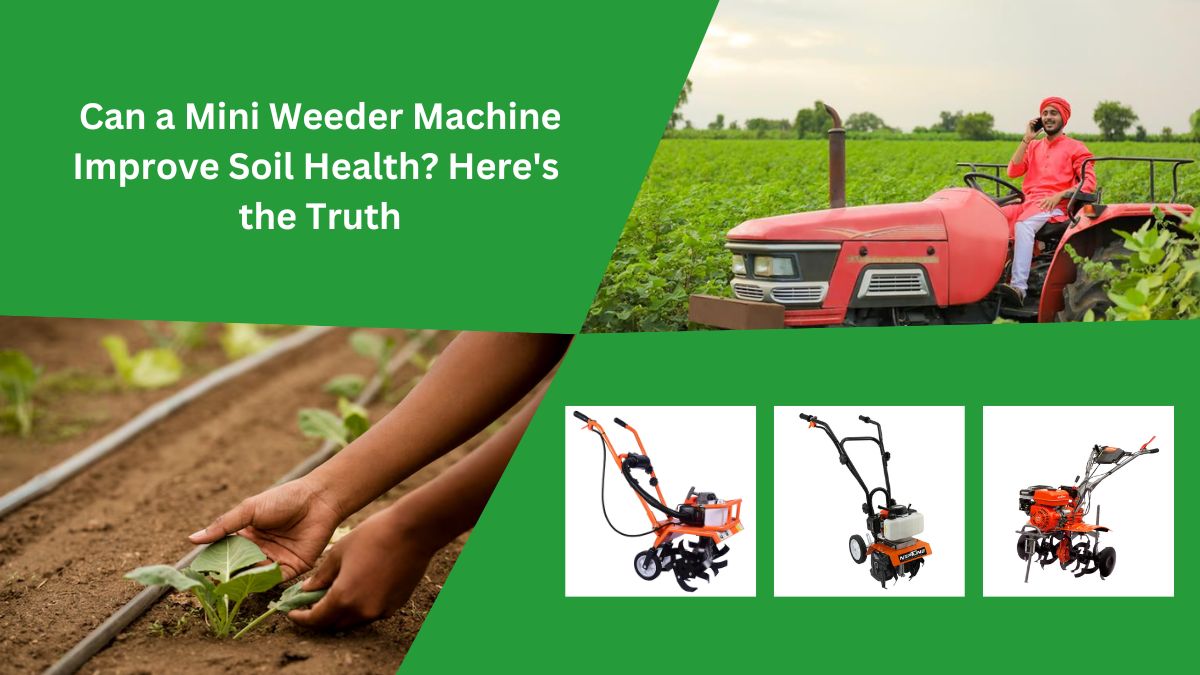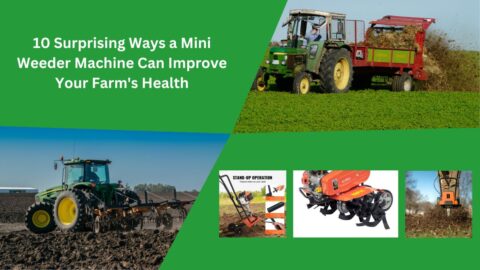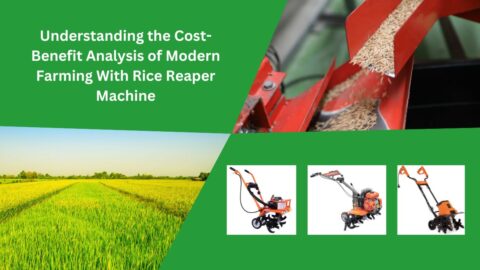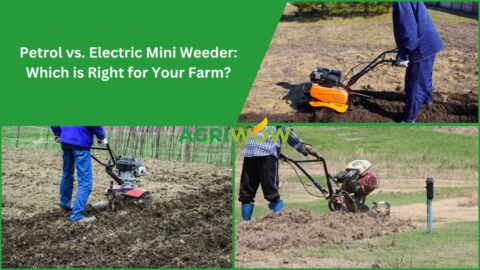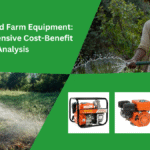Introduction
Healthy soil is the foundation of any thriving farm or garden. Whether you’re growing vegetables, flowers, or crops, the condition of your soil determines how well your plants will flourish. While most people focus on composting or fertilizing, there’s one overlooked tool that could quietly boost soil health—the Mini Weeder Machine. Could this small device really make a big difference? Let’s find out.
What is a Mini Weeder Machine?
A Mini Weeder Machine is a lightweight, compact tool built for weeding tight spaces like small gardens or raised beds. Using rotating blades or oscillating tines, it chops or uproots weeds with minimal disturbance. It’s often electric or battery-powered and perfect for small-scale farming. It’s less aggressive than larger tillers, making it a great option for people concerned about soil structure.
Traditional vs. Modern Weeding
Old-school weeding involves hand tools, a lot of time, and physical effort. It’s easy to disturb the soil too much, harming roots and disrupting soil microbes. A mini weeder streamlines the process and targets only the weed’s crown or upper root system. This leads to less soil damage while saving you time and effort.
Why Soil Health Matters
Soil isn’t just dirt—it’s alive. It contains billions of microorganisms, fungi, and organic matter working in harmony. Good soil:
- Supports plant growth
- Holds water efficiently
- Cycles nutrients
- Prevents erosion
Disrupt this balance, and your garden can suffer. So it’s important to protect the life beneath the surface.
Benefits of Using a Mini Weeder Machine
1. Gentle Soil Disturbance
Unlike hand-pulling weeds or using heavy tools, a mini weeder removes unwanted plants without digging deep. This keeps beneficial organisms, like fungi and bacteria, safe in their habitat.
2. Better Aeration and Drainage
The rotating tines naturally loosen the topsoil, improving oxygen flow and water infiltration. That means roots breathe easier and water reaches deeper without pooling or running off.
3. Incorporating Organic Matter
Some models chop weeds back into the soil. This creates a mini composting effect—those chopped plants break down and feed the soil naturally, increasing its organic content over time.
4. Preventing Soil Compaction
Heavy tools or machines can press down on the soil, closing air pockets and suffocating roots. Mini weeders are light and agile, reducing the risk of compaction while still getting the job done.
5. Fewer Chemicals Needed
By mechanically removing weeds, you rely less on chemical herbicides. That’s safer for your soil, your plants, and the planet.
When Mini Weeders May Not Be Enough
While useful, mini weeders aren’t a fix-all:
- Deep-rooted weeds may still require manual removal.
- Overuse can still cause shallow compaction.
- Some soils, like dense clay, may be tough to break through.
That’s why it’s important to understand how and when to use them properly.
How to Use a Mini Weeder Effectively
To make the most of it:
- Use during dry periods for easier cutting.
- Keep blades clean to maintain sharpness.
- Don’t go too deep—surface-level weeding is ideal.
- Alternate directions when weeding to avoid soil ruts.
Soil Type Compatibility
Mini weeders perform best in loamy or sandy soil. They might struggle in clay-heavy areas without proper soil prep. If you’re in doubt, try watering lightly before use to loosen the surface.
Match the Tool to Your Needs
There are many brands and styles on the market. If you’re considering a power option, the mini power weeder category offers more torque and performance while maintaining portability. For reliable performance and strong customer reviews, tools like the neptune power weeder are worth exploring.
Is It Worth the Investment?
At first glance, the weeder machine price might seem steep for such a small device. But consider the time saved, less strain on your body, and the long-term benefits to your soil. It’s an investment in healthier plants and better yields—totally worth it if you garden or farm regularly.
The Bigger Picture: Integrating with Soil Health Strategies
A mini weeder should be part of a broader soil health plan. Combine it with:
- Composting
- Mulching
- Rotating crops
- Avoiding over-irrigation
This holistic approach ensures you’re not just treating the symptoms but actually building a healthier soil ecosystem.
Common Mistakes to Avoid
- Over-tilling, even with a mini machine
- Using on overly wet or compacted soil
- Ignoring maintenance (dull blades = less effective)
- Expecting it to remove large or woody weeds
Final Thoughts
So, can a mini weeder really improve soil health? Absolutely but only if used thoughtfully. It’s not a silver bullet, but it’s a smart addition to your soil care toolkit. With its ability to aerate soil, reduce chemical use, and add organic matter—all while being easy to operate it’s a small machine with big benefits.
FAQs
Q1: Is a Mini Weeder Machine suitable for large farms?
A: It’s ideal for small plots or specific areas like raised beds. For larger farms, you may want to scale up to more powerful weeding machines.
Q2. What are the advantages of power weeder?
Power weeders help in controlling and removing weeds effectively and efficiently. Power weeders allow crops to access more resources such as water, nutrients, and sunlight. This leads to improved crop productivity and higher yields. Power weeders automate the process of weed control, reducing the need for manual labor.
Q3. What are the disadvantages of weeder?
Disadvantages
- The weeder must be used when weeds are small; therefore, timing is critical.
- Between-row control is poor. Finger weeders should be used in combination with an inter-row cultivator.
- Slow, precise cultivation is necessary to minimize crop damage.

